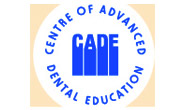Orthodontics

Orthodontics, the branch of dentistry concerned with the growth of the teeth, jaws and face, is in high demand. Orthodontic treatment is about making the best of your teeth; it's about improving the harmony of your mouth and jaws. Once you can bite together correctly, you can eat more comfortably and care for your teeth and gums more easily. And your smile will benefit immensely!
This is the science that involves correction of the irregularly and malpositioned teeth. It also involves orthopedic correction of the jaws in a young child. With the help of orthodontic appliances the appearance of the individual can be majorly improved. Treatment is carried out with removable and/or fixed appliances, such as braces, retainers, or other dental appliances.
The Starting Point
Most courses of orthodontic treatment begin with a referral from a general dentist to a specialist. Depending on what treatment is needed, most patients are seen by a specialist in a local practice or by a consultant in hospital. Some patients are treated by dentists with extra training and experience to treat the milder cases.
These are some of the most common reasons for a referral:
- Protruding upper front teeth - one of the most common dental problems
- Crowding - a narrow jaw may mean there is not enough room for your teeth, resulting in crowding. Conversely, some patients have significant gaps between their teeth.
- Asymmetry - particularly when the centre lines of the upper and lower front teeth do not match, perhaps because the teeth have drifted or the position of the jaw has shifted.
- A deep bite - when your upper teeth cover the lower teeth too much
- A reverse bite - when your upper teeth bite inside the lower teeth
- An open bite - when your front teeth remain apart when your back teeth meet; the tongue is often still visible between the upper and lower front teeth.
Impacted teeth - in some patients, secondary teeth come through in the wrong position or do not erupt at all. Orthodontic treatment can help bring these teeth into the correct position.
Getting Treatment
Every patient needs tailor-made treatment, planned by the orthodontist and agreed with you, the patient. In order to decide what treatment is required for you, your orthodontist will need to carry out a full assessment of your teeth which is likely to include x-rays, impressions (moulds of the teeth) and photographs. Treatment can take more than two years so it is important you are happy from the outset with what is recommended. Braces are almost always needed. Those which are used most often are:

A Fixed Brace -
This is the most common type of brace today, often known as "train tracks". Brackets are glued onto the teeth and linked by wires. Small elastic hoops are often used to hold the wire in position. The wires exert gentle pressure to move the teeth into a new position. The brackets can be metal, ceramic or even gold and the elastic loops come in many colours.

A Removable Brace -
This is sometimes used for correcting a simple problem, such as moving a single tooth or expanding the dental arch. It has a plastic baseplate with wires and springs attached. Removable braces need to be worn all the time except for cleaning or sport.

Functional Appliances -
These are used to harness the growth of the jaws and improve way the upper and lower teeth meet. There are several designs all of which fit on to both the upper and lower teeth and hold the lower jaw forward. They are mostly removable but should be worn as near to full-time as possible.

Retainers -
At the end of treatment, all patients should wear retainers to hold their teeth in the new position. These can be removable or fixed and are an important part of treatment.












